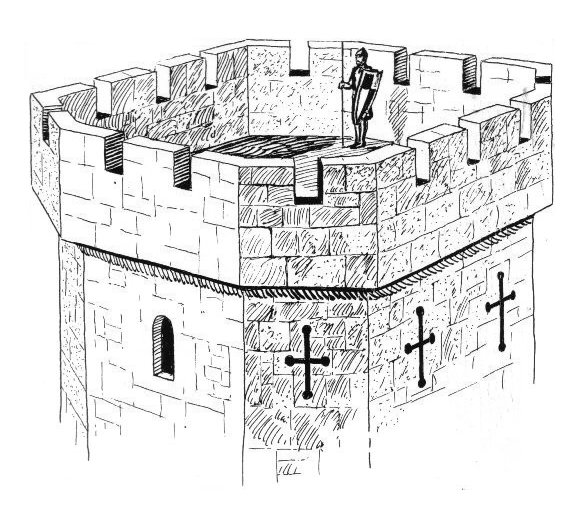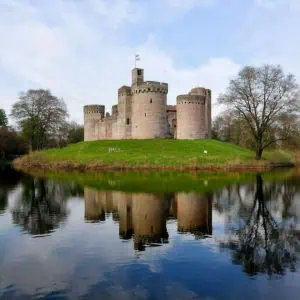Castle battlements are one of the most iconic features of medieval fortifications, designed to provide defenders with protection while allowing them to launch attacks on enemies below. Typically located along the top edges of castle walls and towers, battlements consist of alternating high sections called merlons and low gaps known as crenels or embrasures. This distinctive pattern allowed archers and soldiers to shield themselves from incoming projectiles while firing arrows, crossbows, or other weapons. Battlements played a crucial role in castle defense, combining functionality with the imposing silhouette that castles are known for today.
Battlement Definition
The word Battlement is the collective term used to describe several parts of a defensive castle wall that are needed to make up the “battlement”
Battlement Castle Parts
- The parapet is a low defensive wall that is usually built at the shoulder or head height
- Crenels which are the gaps in the wall
- Crenellation which is the act of making the Crenels
- Merlons are the solid sections of the walls
The battlements are usually placed on top of the outer main castle walls at the entrance but can be added to any part of a castle’s main walls, including towers.

Battlement Parapet
This is the main part of the Battlement the low stone wall that Crenels (gaps) and Merlons (solid parts)

Battlement *Crenels *Parts of a Castle
Crenels were simply the gaps that were usually a square or rectangular shape in the Battlement parapet (wall). Crenels were usually spaced at regular intervals either when building the Parapet (wall) or added later, this act of adding Crenels to a previously unbroken wall was called Crenellation.
Crenels are also sometimes called carnels or embrasures – Crenels usually had a defensive purpose but were also sometimes added for decorative purposes.

Battlement *Merlons
Melons were the solid parts of the wall, crenels were the gaps.
The Castle Battlement
A Castle Battlement can be described as being an additional defensive stone wall that was built at the top of a castle’s main wall. The Castle Battlement served several purposes, to defend the castle’s military and at the same time gaps in the wall allowed archers to fire arrows, and other military defending the castle could drop objects on the enemy below.
The Battlement Parapet (wall) was commonly built around the chest, shoulder, or head height to help protect the defenders of the castles from enemy fire, the cutouts in the castle Parapet were called Crenels and were usually square or rectangular and allowed archers to fire their arrows at the enemy, they could then re-load safely behind the higher part of the parapet wall.
- Battlement walls were made of stone and were thinner than the castle’s main wall
- Battlements protected the Castles military and archers from enemy fire when they reloaded
- The gaps (Crenels) in battlement walls (parapets) provided a lower section where archers could fire arrows at the enemy
- Archers and military defending a castle could hide behind the battlement merlons
- Rocks and other projectiles could be thrown from the gaps (Crenels) in the Battlement wall
- Adding gaps to a solid battlement wall (Parapet) was called Crenellation and the gaps Crenels
Medieval Castle Battlements Description
Castle battlements were defensive walls that were built on the top of a castles main outer walls for defensive reasons and allowed castles military to defend the castle against castle sieges and attacks. A battlement also describes a defensive city wall made from stone that often surrounded a medieval town.
The decline of medieval Castle battlements
The decline of medieval Castle battlements and the decline of castles themselves can be attributed to the advancement of medieval weaponry, in particular Cannons. These new gunpowder weapons and the start of the age of enlightenment which was called the “Renaissance period” led to the decline of medieval castles and medieval castle battlements were no longer required.











